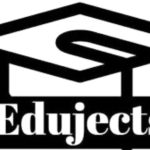Week 1: Introduction to Graphic Packages
Graphic packages are software applications used for creating and editing visual content such as images, logos, posters, and illustrations. These tools are essential for graphic design and are widely used in various industries like advertising, media, and education.
Common Graphic Packages:
- CorelDRAW: Ideal for vector graphics and illustration.
- Adobe Photoshop: Used for photo editing and raster graphics.
- GIMP: A free and open-source image editor.
Features of Graphic Packages:
- Toolbars and Menus: For quick access to functions.
- Layers: Organize and manage elements in designs.
- Color Palettes: Create visually appealing designs with diverse colors.
Example:
A graphic designer uses CorelDRAW to create a company logo with a sleek and professional look.
Reading Assignment:
Research three uses of graphic packages and write them down.
Evaluation Questions:
- Define graphic packages.
- Mention two examples of graphic packages.
- List three features of graphic packages.
Week 2: Advanced Features of Graphic Packages
In this week, students learn to explore the advanced features of graphic packages that enhance creativity and productivity.
Key Features:
- Filters and Effects: Add artistic touches to designs.
- Custom Templates: Save time by using pre-designed templates.
- Export Options: Save designs in different formats (e.g., PNG, JPEG, PDF).
Example:
Using Adobe Photoshop’s filters to create a glowing effect on text.
Reading Assignment:
Watch a tutorial on using filters in Photoshop and practice applying them to a simple design.
Evaluation Questions:
- What are filters in graphic design?
- Name one benefit of using templates in graphic packages.
- List two export formats available in graphic packages.
Week 3: CorelDRAW Basics
CorelDRAW is a popular vector graphic design software. It is widely used for creating high-quality illustrations, logos, and designs.
CorelDRAW Interface:
- Toolbox: Contains tools for drawing, editing, and coloring.
- Property Bar: Displays options based on the selected tool.
- Docker Window: Offers additional functionality like object management.
Example:
Designing a business card using CorelDRAW with custom fonts and colors.
Reading Assignment:
Explore the CorelDRAW interface and identify the use of the toolbox and property bar.
Evaluation Questions:
- What is CorelDRAW used for?
- Name three components of the CorelDRAW interface.
- How can the property bar assist in design creation?
Week 4: Understanding Objects in Graphic Design
Objects are the building blocks of graphic design. They can be shapes, text, images, or any visual elements used in a design.
Types of Objects:
- Shapes: Circles, rectangles, polygons.
- Text Objects: Styled or plain text.
- Images: Photos or imported graphics.
Example:
Creating a poster with a combination of text and shape objects to emphasize key messages.
Reading Assignment:
Experiment with creating shapes and adding text in a graphic package of your choice.
Evaluation Questions:
- Define objects in graphic design.
- List three types of objects.
- How can objects be used in poster design?
Week 5: Object Transformation
Object transformation refers to modifying objects to achieve desired shapes, sizes, or orientations.
Types of Transformations:
- Resizing: Changing the dimensions of an object.
- Rotating: Adjusting the angle of an object.
- Flipping: Reversing the object horizontally or vertically.
Example:
Resizing and rotating a logo to fit within a banner design.
Reading Assignment:
Practice resizing and rotating objects in CorelDRAW or Photoshop.
Evaluation Questions:
- What does object transformation mean?
- Mention three types of object transformations.
- Give an example of when flipping an object is necessary.
Week 6 & 7: Object Editing and Arrangement
Editing and arranging objects involve adjusting their properties and organizing their placement within a design.
Key Concepts:
- Grouping and Ungrouping: Combine or separate objects.
- Layer Management: Organize objects in layers.
- Alignment: Position objects symmetrically or asymmetrically.
Example:
Grouping text and shapes to create a cohesive design element.
Reading Assignment:
Research the importance of layer management in graphic design.
Evaluation Questions:
- What is the purpose of grouping objects?
- Explain the importance of layer management.
- How does alignment improve a design?
Week 8 & 9: Working with Layout
Layouts define the arrangement of elements on a design canvas. A good layout ensures clarity and visual appeal.
Key Elements:
- Margins and Spacing: Maintain uniform gaps.
- Balance: Distribute elements evenly.
- Hierarchy: Highlight key elements using size or color.
Example:
Designing a magazine cover with a balanced layout and eye-catching headlines.
Reading Assignment:
Create a simple layout for a flyer using a graphic package.
Evaluation Questions:
- What is a layout in graphic design?
- Why are margins important?
- Mention two ways to achieve balance in a design.
Week 10 & 11: Maintenance of Computers
Maintaining a computer ensures its optimal performance and extends its lifespan.
Key Maintenance Practices:
- Regular Updates: Keep software and operating systems up to date.
- Disk Cleanup: Remove temporary files to free up space.
- Antivirus Software: Protect against malware and viruses.
- Hardware Care: Clean components and ensure proper ventilation.
Example:
Running a disk cleanup tool to improve system performance and remove junk files.
Reading Assignment:
Read about five common computer maintenance tools and their uses.
Evaluation Questions:
- Why is computer maintenance important?
- List three maintenance practices.
- How does antivirus software protect a computer?

